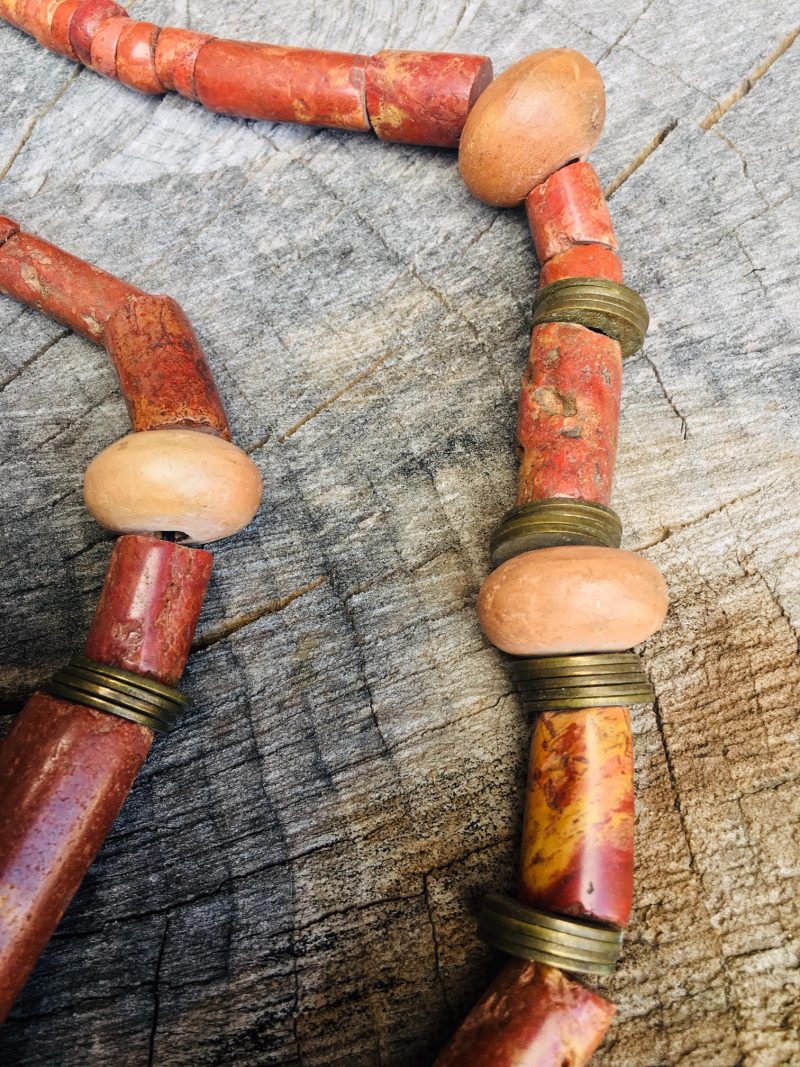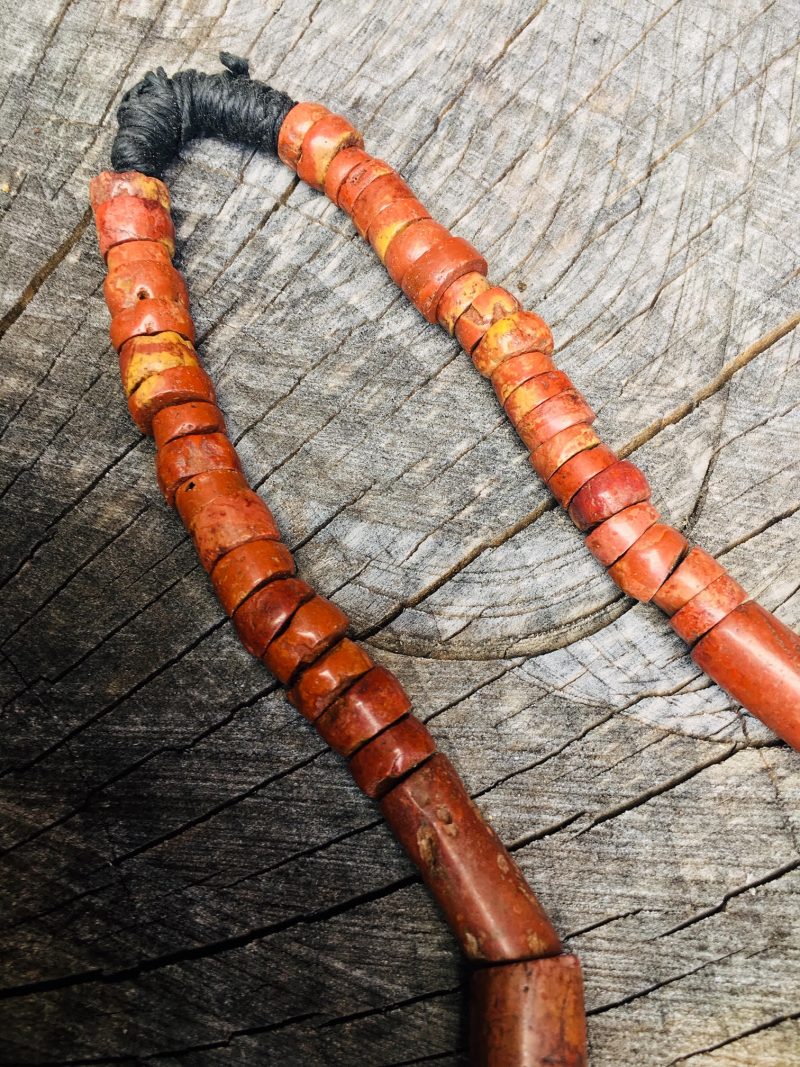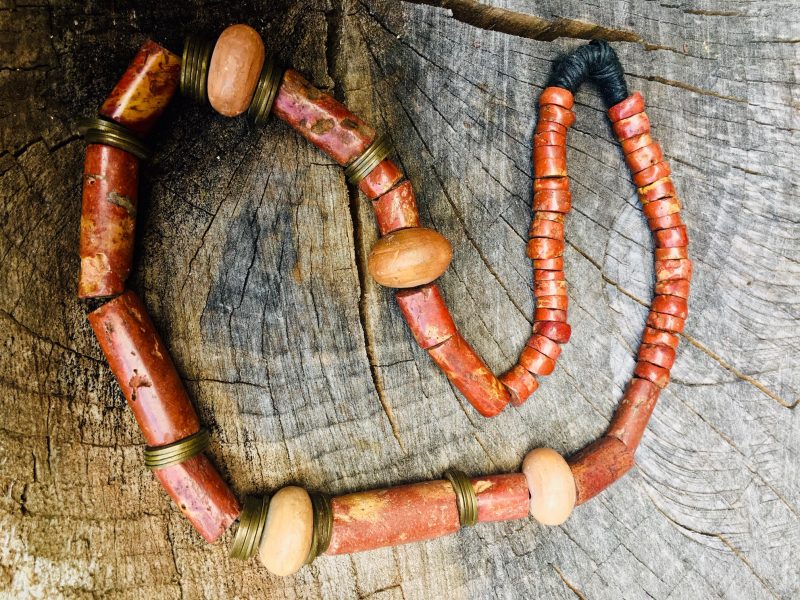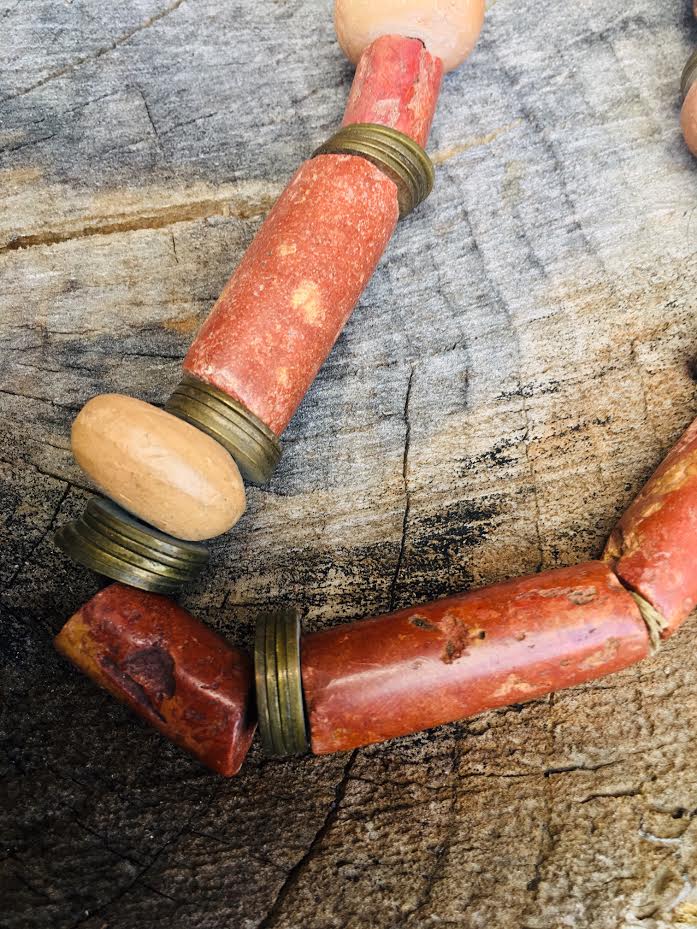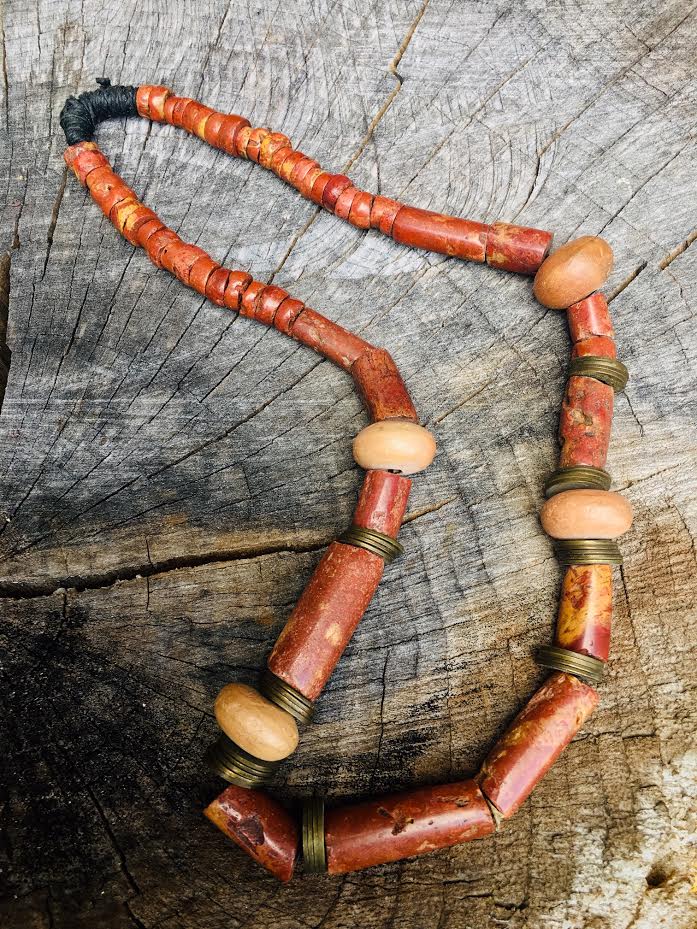DONATED. Rare Coral Necklace made by Alvin Baltrop, NYC
Red Coral Hand Made Necklace. Custom made in the early nineties in NYC by photographer and jewellery designer Alvin Baltrop. Full length from one end to the other: 28 inches length. Largest coral measures just under 2 inches length, & nearly 3/4 width. There are 51 seperate pieces of coral, along with 4 ceramic (terra cotta) oval beads and 34 copper rings. The necklace is strung and knotted on steardy leather cord. These amazing Heirloom Beads were possibly collected in West Africa, where they are passed on thru generations of traditional women as High Level Dowry and Prestige Beads.
To be appraised for hopeful donation to the Bronx Museum, USA.
See current photography exhibit by Baltrop here: http://www.bronxmuseum.org/exhibitions/the-life-and-times-of-alvin-baltrop
Research:
African glass “Trade Beads” of European origin came into existence when European Traders along the route between Europe and Africa were pressed for an acceptable currency form to exchange on African soil. Brightly colored glass beads with exotic shapes and intricate patterns fit extremely well as the most desirable trade material due to the popular demand that African Cultures had for luxurious and unusual adornment. The classic traditions of African Adornment were finely crafted of gold, iron, ivory, and bone and other organic materials. Gorgeous exotic stone beads of Indus Valley origin were actively traded in the Empire of Mali at this time. However, glass working technology outside of Egypt and the Ancient trade in Northern Africa was mostly unknown in Sub Saharan Africa at this time. Therefore, the exquisite glass beads that the European traders had to offer were widely and rapidly received.
The Dutch and Portuguese were among the first Europeans actively trading along the African Coasts dating back to the 16th century. “Trade Beads” manufactured in Europe readily fit into a barter currency system used for African goods and already actively traded commodities such as ivory, gold, copper, spices and palm oil. Sadly, slaves were also an actively existing trade, and certain beads were also accepted in this heinous practice as well. European trade beads took on such importance and cachet that they became a status symbol of wealth and power in African communities. Certain types deemed the most valuable were reserved for use only by Kings and their Royal Courts. Almost all cultures in this time period viewed these exotic “foreign” glass beads a symbol of wealth and social standing. The beads entered into the realm of Heirloom Beads and Dowry Currency, and were passed down from generations of families as highly treasured possessions.
Coral is created by millions of small organisms at the bottom of the ocean called polyps. Each polyp builds up a limestone case around itself, which remains after it dies. The casing becomes the basis for another polyp to build its home. Slowly, after thousands of years, these casings build up into what we know as a coral reef. Historically, material from these reefs were highly prized, and used to make jewelry and other ornamental objects. However, because removing coral from these reefs is bad for ocean environments, there are strict regulations against removing coral from the ocean. Most coral used today is grown in coral farms, rather than being taking from the ocean. Most precious coral is harvested in the Mediterranean Sea, especially in Sardinia. Deposits are also found in the Pacific, in Japan, Taiwan and Australia. In contemporary stone lore, Coral is rumored to stimulate emotional healing and relieves stress.
